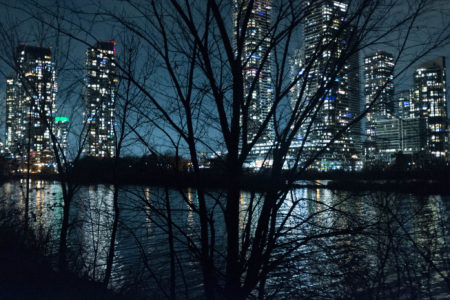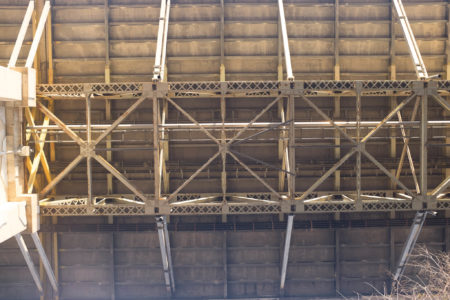Author: Milan
View under bridge
For universities, an investment in fossil fuels is a bet against your students
An article which I wrote with some University of Toronto professors: Universities must dump their fossil fuel investments before fundraising
Music featuring my brother
“Falling” by Chlo Chlo, featuring Sasha on keyboards
Snow hiking
Birthday hike
Hand editing chapter drafts in U of T libraries
To advance the aim of getting down to four 50-page chapters, I have been bringing printouts to review on campus for the last couple of days. The change of scenery has certainly been accompanied by a change in feeling and thinking, and I am starting to feel the emotional distance from the text which is necessary for effective editing.
The big tasks ongoing are to cut out or move away any sections not important for the scholarly argument in the dissertation; to split out my own normative conclusions from empirical and analytical arguments, to be moved into a chapter of their own at the end; and to cut out passages that are too theoretical or speculative, trying to stick more closely to what can be anchored and justified with reference to the campus fossil fuel divestment movement specifically.
The political opportunities, mobilizing structures, and repertoires chapters are all getting this treatment now, and it feels more like progress forward than continuing with my recent efforts to grind through micro-level changes from my own comments and those of committee members.
It may be that the long section which I wrote on counter-repertoires against divestment developed by university administrations can be pulled out and self-published soon. I did ideally want to find an academic journal for it to get it more attention, but with all the rounds of revision and editing that would require it’s probably best to get it out as a personal draft and focus on getting the actual dissertation out as soon as can be managed.
Cohen historical theory
Avner Cohen provides a great summary of writing history (here under the particular limitations of studying Israel’s nuclear arsenal):
The narrative I offer, then, is by nature incomplete and interpretative. Like all narratives, it is not written from God’s-eye view; rather, it is a story told through incomplete human and archival sources.
Cohen, Avner. “Before the Beginning: The Early History of Israel’s Nuclear Project (1948–1954).” Israel Studies 3.1 (1998): 112-139.
Back in libraries
To do my part in reducing the reproduction rate of COVID-19, since March 2020 I have been avoiding indoor spaces and largely only going out for grocery walking and exercise walks.
I had stepped into a few U of T libraries to pick up and return books, but tonight was the first time I have gone in and read for several hours since pre-pandemic. Three surprise nice features:
- Being at Gerstein and Robarts made me feel like a student again, not just an ex-student with a very long incomplete overdue assignment
- The legibility of books under these lights is a reminder of how dim the lighting fixtures are in my current Byq Bepuneq Ubzrf apartment in North York (along with the flimsy plumbing fixtures, cheap locks, woeful lack of insulation, and notably inefficient furnace and AC unit)
- Seeing people wearing masks properly and voluntarily — because it’s the rule and because it makes sense — is heartening when so many in Toronto do a terrible job (useless clear hard masks, masks around chins, and loudmouths demanding service unmasked in shops and usually getting it because nobody wants to confront them)
As part of completing 50 page drafts of my political opportunities, mobilizing structures, repertoires, and framing chapters I am going to try reviewing and prioritizing the contents of paper printouts in these libraries during the short time ahead.
Cohen on the purpose of Dimona
The scope of the Israeli request for French technological assistance, the details of which Shimon Peres spelled out in Paris in 1956/1957, was tantamount to a national proliferation commitment. Enough is now known about the extent of the Dimona deal to appreciate how determined Ben-Gurion was to pursue it. The Dimona nuclear complex was designed to include all the technological components required for a plutonium-based nuclear-weapons infrastructure. The project’s scope and purpose were evident in the facility’s sanctum sanctorum, the deeply dug underground reprocessing facility designed to extract plutonium from spent uranium rods. Nothing is more indicative of Israel’s initial commitment to build a nuclear-weapons capability than this supersecret and costly facility. From the beginning, Israel hoped that [sic] within a decade or so to have enough fissile material to build its own nuclear device.
Cohen, Avner. The Worst-Kept Secret: Israel’s Bargain with the Bomb. Columbia University Press, 2010. p. 57–8
Related:




